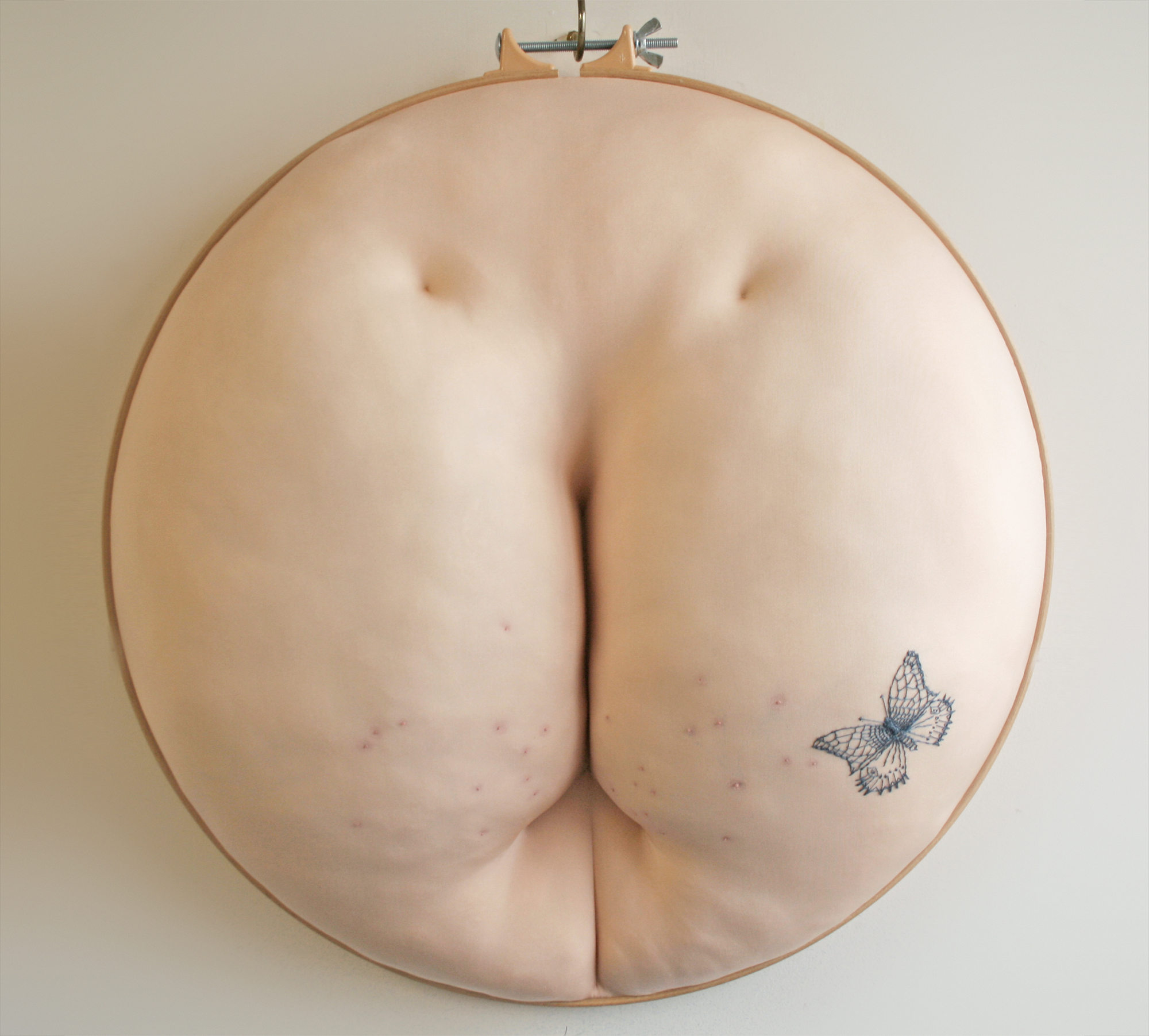
Naked is how we arrived in this world, so why do we continue to feel so ashamed by our own bodies? That’s a question that many creatives are trying to answer through their embroidery art. Being fully nude represents vulnerability and to see yourself how you truly are—flaws and all.
In symbolizing the naked body, artists attempt to reconcile conventional standards of beauty with the reality of life. Fabric and thread are stand-ins for skin—the material bends, wrinkles, and sag, just like our own. Artist Rebecca Harris best describes this with thin, gauzy fabric and light stitching. As it’s fashioned into flesh, we immediately get the fact that this is aging skin.
Above:Sally Hewett loves bodies, butterfly tattoos and all.
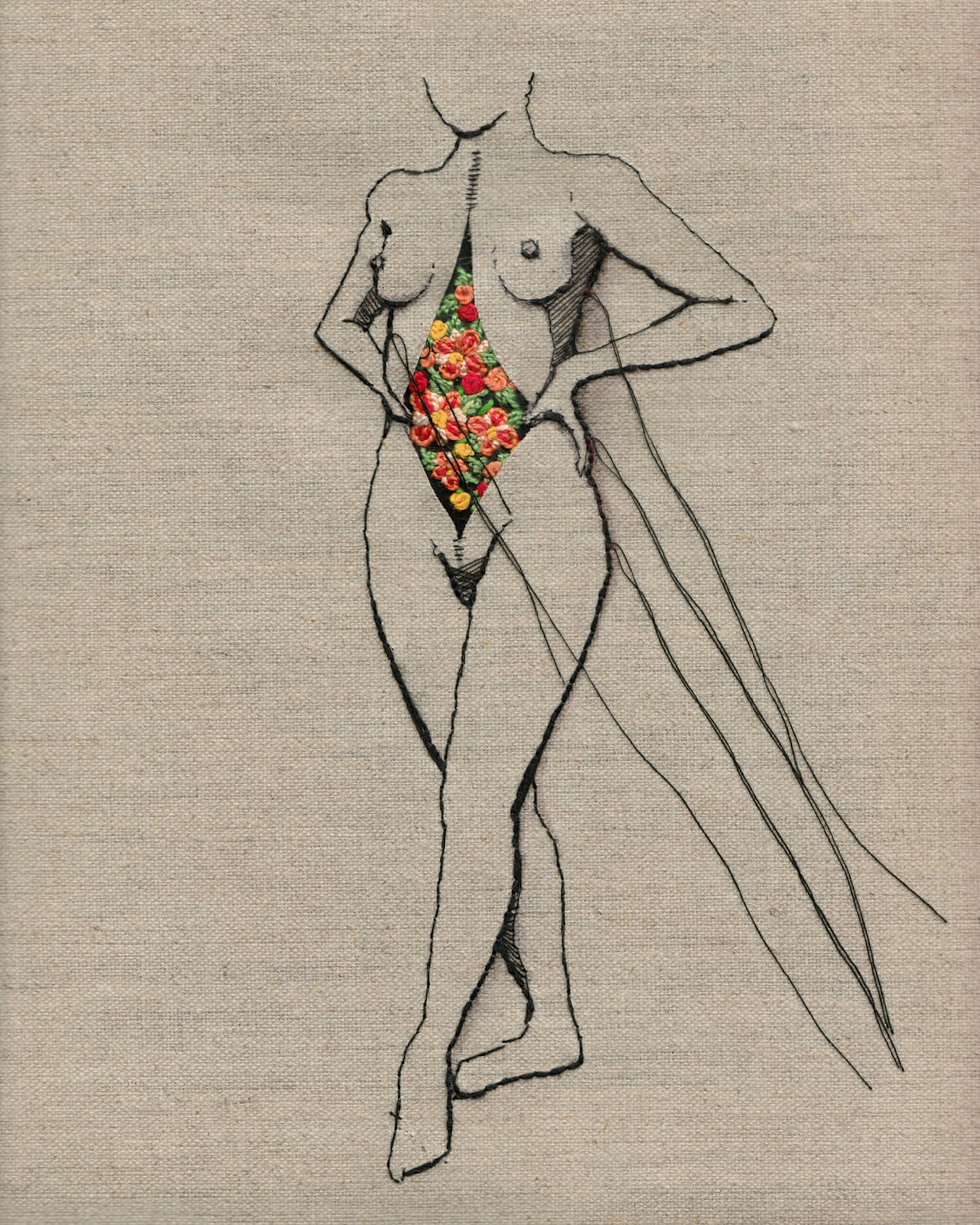
Andrea Farina uses embroidery to “sketch” figures.
Andrea Farina
Multidisciplinary artist Andrea Farina writes that her figurative work “explores the human body and what defines us beyond our anatomy.” She handles embroidery thread like the pen sketches, pairing thick and thin lines to convey the feeling of weight and movement. Here, the lines that radiate from the vulnerable figure are palpable with tension as they reveal what’s beneath the skin.
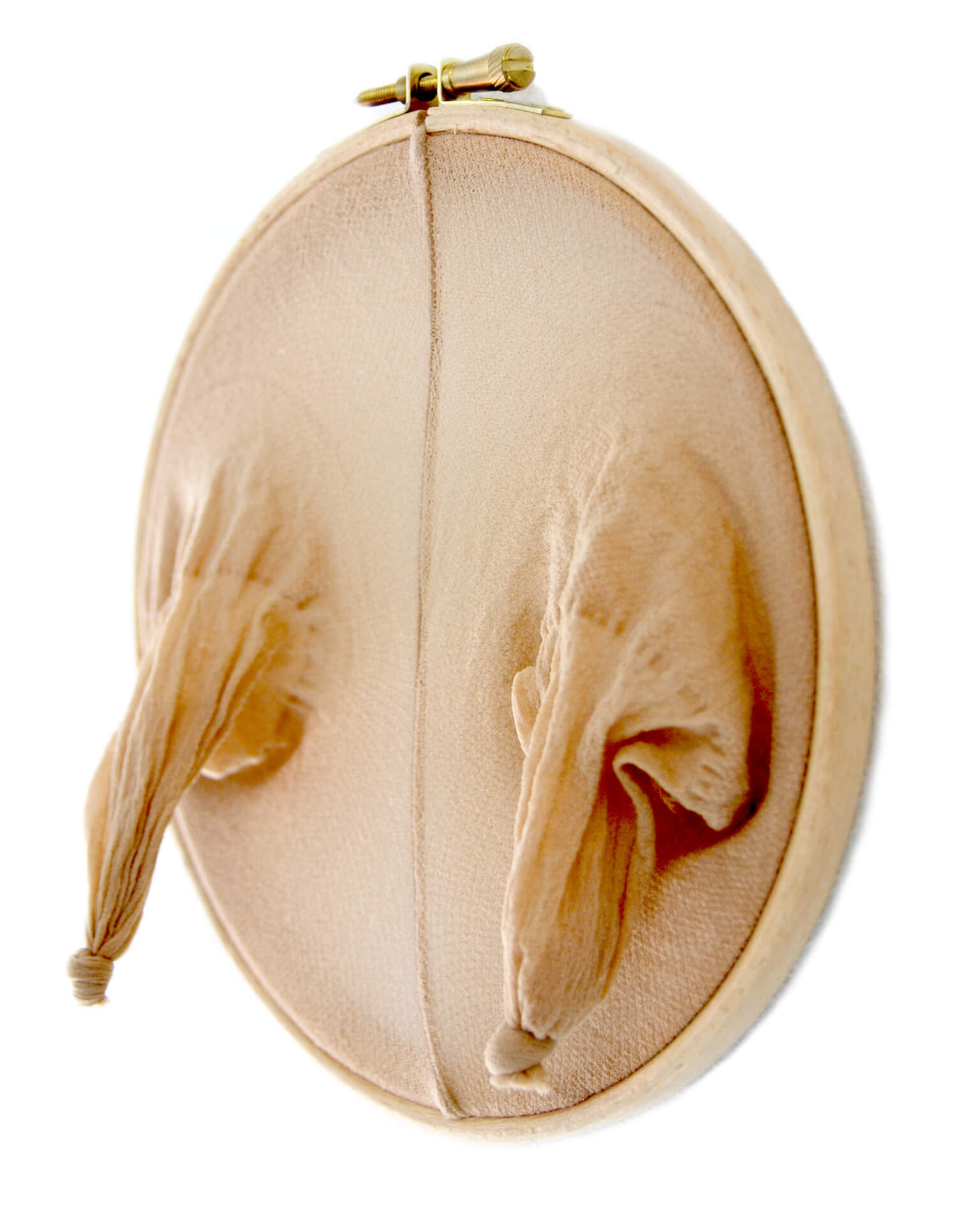
Rebecca Harris is also a writer and contributed to “The Politics of Size: Perspectives from the Fat Acceptance Movement.”
Rebecca Harris
“I have owned my body since 1977 and am obsessed with how we experience and see the human body,” artist Rebecca Harris writes. In exploring this notion, she creates work in textiles, drawings, and other soft sculptures. This particular piece is from her “Obscure Objects of Obesity” series. It was created when Harris “came out as a fat woman” and comments on the stretching and fold of skin—in addition to the effects of weight loss and aging on our ideal notions of beauty.
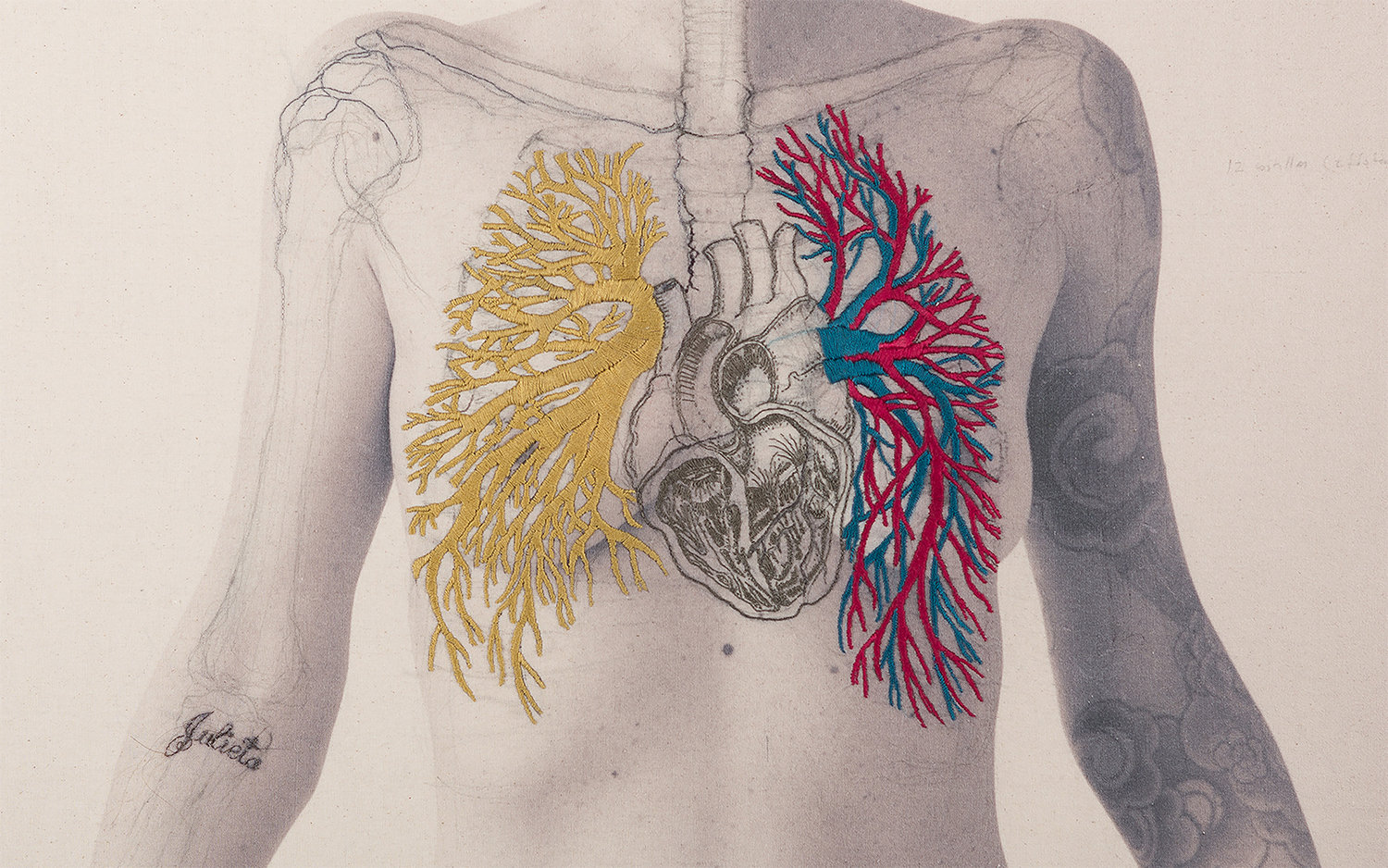
This embroidery reveals the things things we cannot see.
Juana Gomez
Artist Juana Gomez focuses on the micro and marco worlds that exist within living beings as well as inorganic things. Using veins as an example, she writes, “This fundamental law can be seen in the veins of a leaf, the course of a river and its tributaries, the central nervous system of humans, sea currents and routes Internet traffic.” She expresses this common denominator through her embroidery, pairing a coral-like structure with the lungs of the human body.
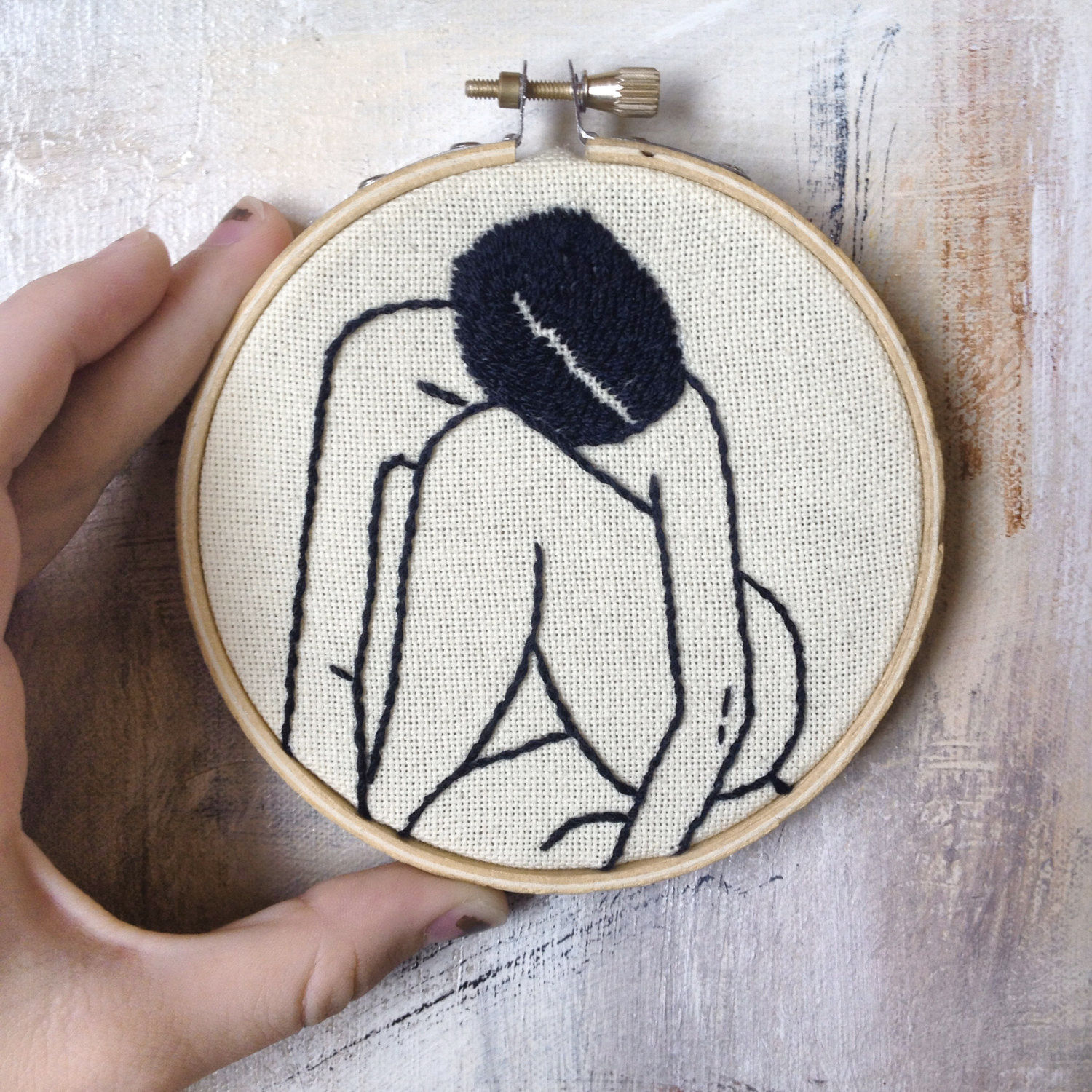
“I am a embroidery artist who cant keep her hands still,” lllilllstitches says.
lllilllstitches
“Crafts rule everything around me,” lllilllstitches says. Working almost exclusively on natural-colored fabric with black thread, her portraits feature women who celebrate their nakedness. They dance and grab hands—they’re generally comfortable in their skin. It’s more than many of us can say about ourselves; if you need a reminder to love yourself, the North Carolina-based embroiderer sells them in her Etsy shop.
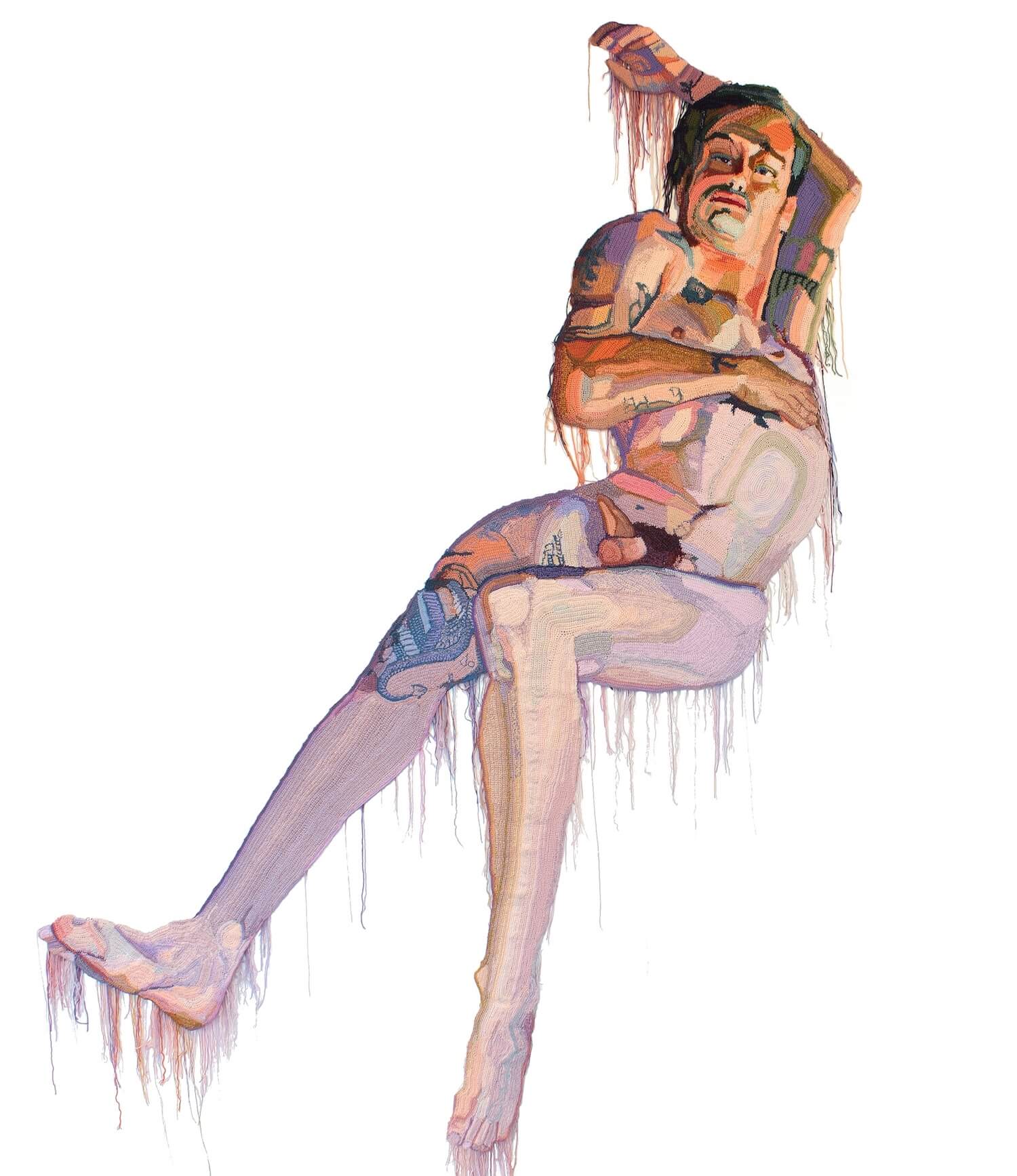
Jo Hamilton began using this technique in 2006.
Jo Hamilton
Jo Hamilton combines traditional fiber techniques with contemporary portraiture. This reclining figure, in a pose often seen in art history, is contorted and abstracted by the very nature of Hamilton’s technique. Using a hook to create these stitches, there is only so much realism that can be achieved. But, that’s besides the point. Hamilton is out to remind us that like the fabric and yarn, our skin does that too.
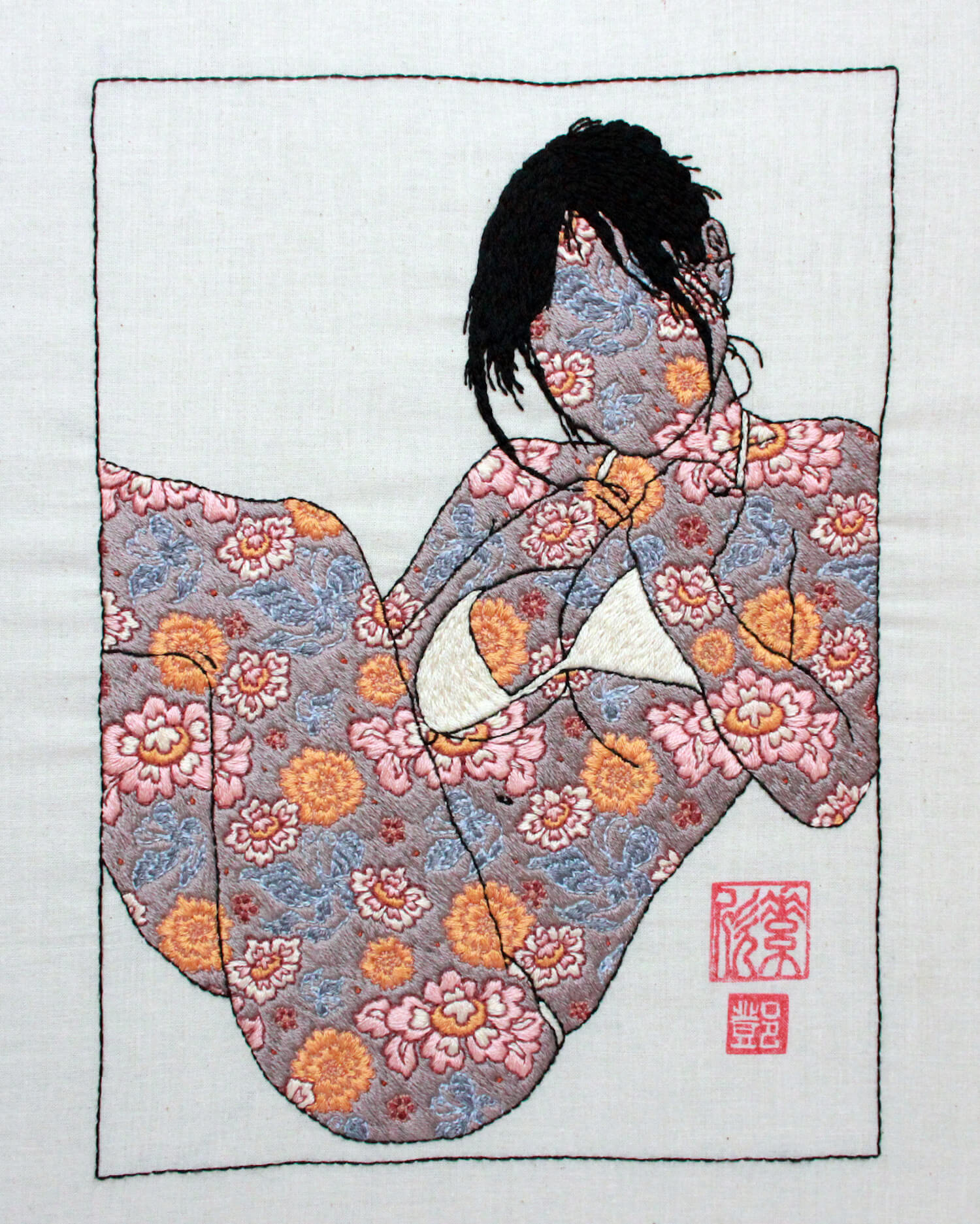
In addition to embroidered portraits, Jessica So Ren Tang creates embroidered objects.
Jessica So Ren Tang
San Francisco-based artist Jessica So Ren Tang fills the bodies of her subjects with bright motifs. Embroidery is a way to explore her Asian-American born identity. She explains, “The Dualism of being too Asian to be American, and too American to be Asian.” This colorful piece is from her “Girl” series. In it, she writes, “I replace the facial identity of suggestively posed Asian women with Asian textile patterns. The patterned skin creates a broader spectrum of Asian identity; it becomes more ambiguous and fluid as identity moves between the two.”
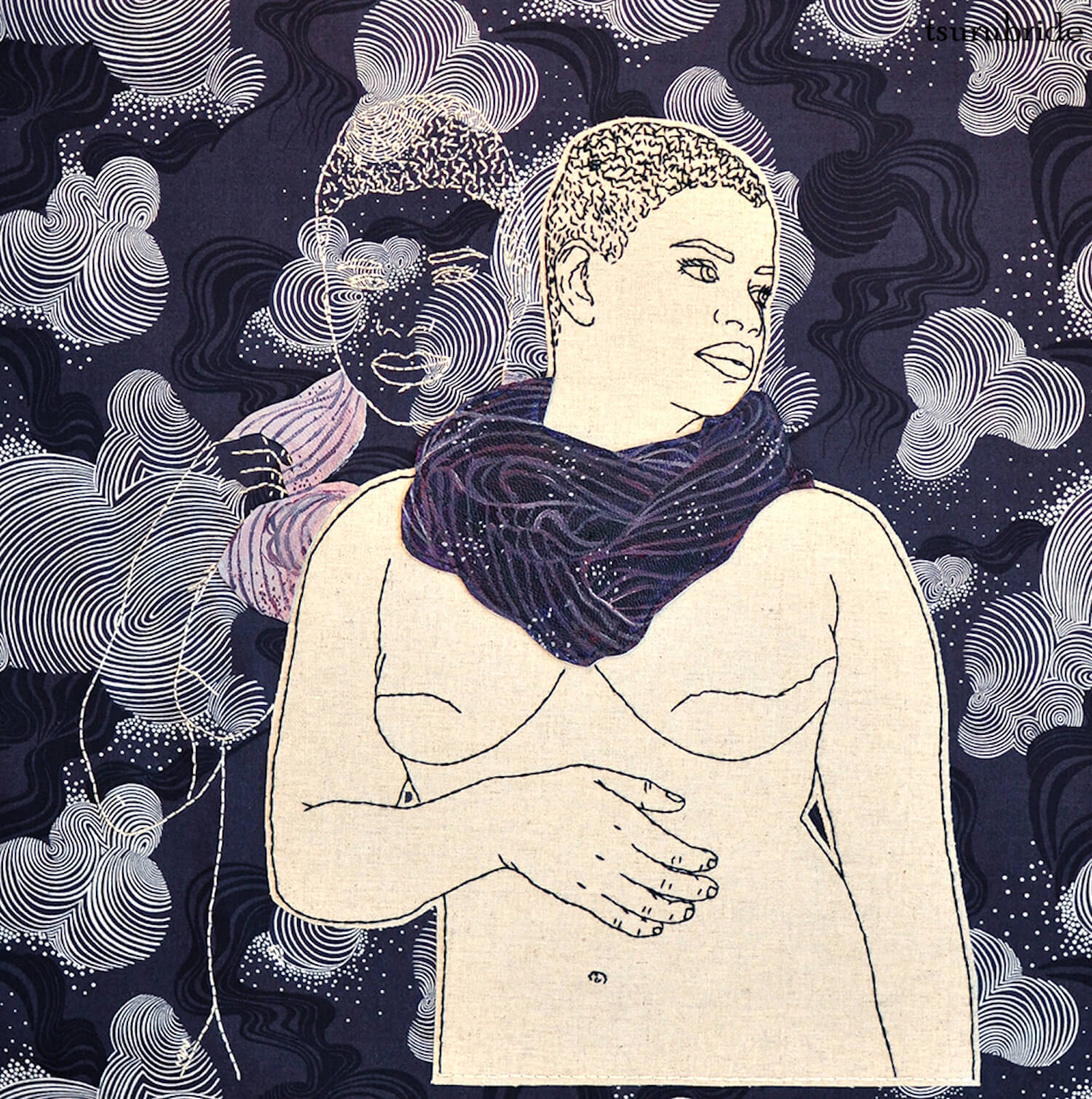
Through appliqué and embroidery, Meghan Willis celebrates women.
TsuruBride
When Meghan Willis, aka TsuruBride, was 6 years old, she learned to “make ill-fitting clothes for my Barbie doll.” That morphed into a fashion degree and a day job in the apparel industry. At night, however, she explores “the art of undressing, movement, and sensuality through embroidery.” Using real women as her models, Willis writes, “I aim to tempt the viewer to follow the delicate stitching that caresses the bodies I reveal through thread. I aim to celebrate women: their strengths and sexuality.”
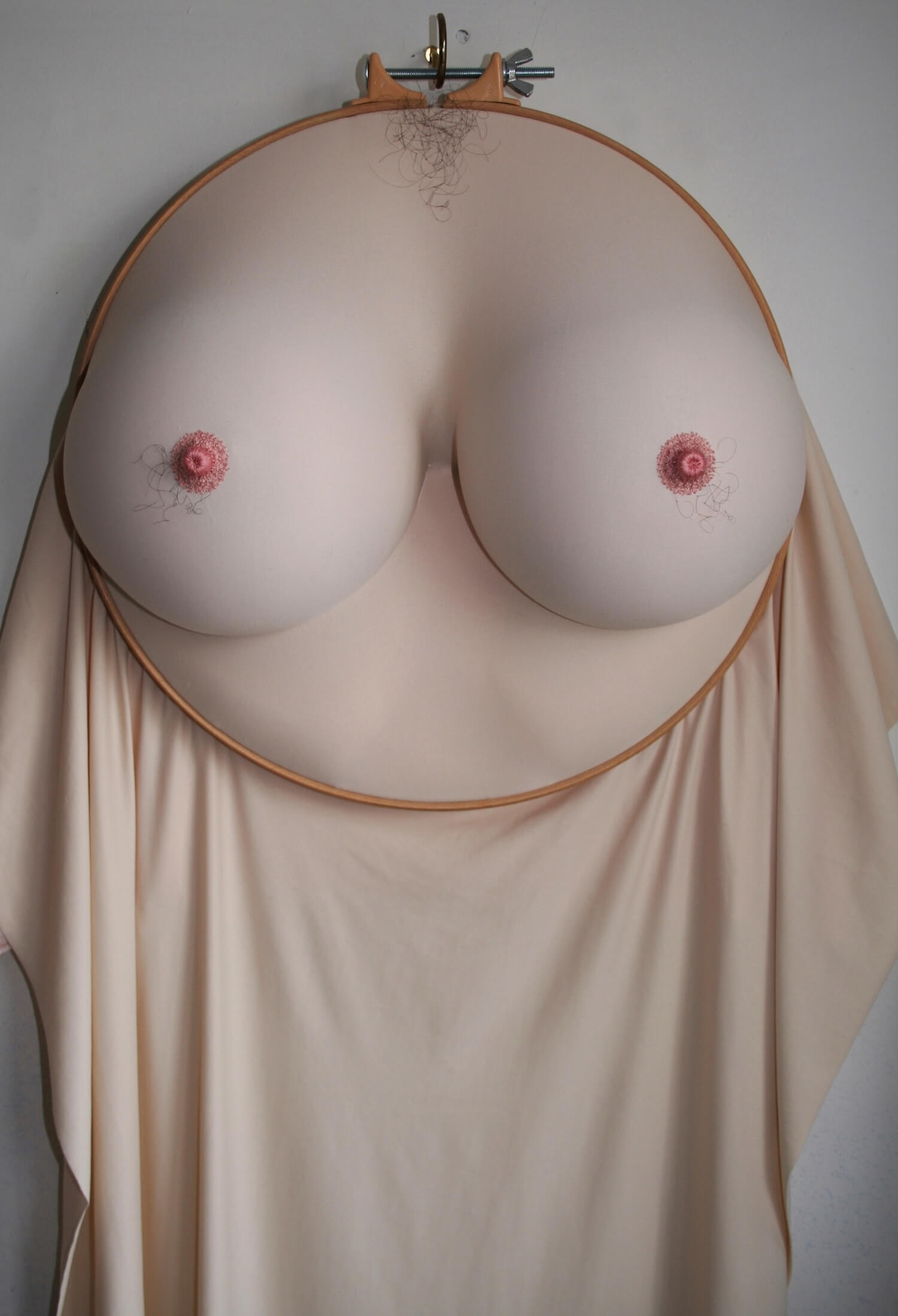
Sally Hewett asks, “Are some characteristics of bodies inherently beautiful, or ugly, or disgusting?”
Sally Hewett
Artist Sally Hewett writes, “I love bodies,” but these aren’t the type you’d find on runway models. She’s talking about “bodies which show their history, that have been altered by their experiences, that are decorated with bruises, scars, spots, stretch marks, freckles, pigmentation, veins. Bodies that have the marks of life on them.” Contained within embroidery hoops are bulbous butts and breasts that show their age. The cellulite, hair, and embarrassing tattoos aren’t something to be ashamed of, but show their humanity.
Images © respective artists.
